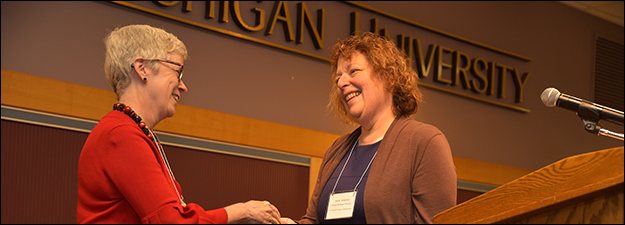Obscured by the Alps: Medieval Italian Architecture and the European Canon
Sponsoring Organization(s)
Italian Art Society
Organizer Name
Erik Gustafson
Organizer Affiliation
George Mason Univ.
Presider Name
Erik Gustafson
Paper Title 1
The Church of San Lorenzo in Verona: A "Hapax" in the Romanesque Architectural Context in Europe
Presenter 1 Name
Angelo Passuello
Presenter 1 Affiliation
Univ. Ca' Foscari Venezia
Paper Title 2
Italian Octagonal Piers and Late Medieval Anti-Classical Modernism
Presenter 2 Name
Evan W. Grey
Presenter 2 Affiliation
Institute of Fine Arts, New York Univ.
Paper Title 3
Enlightened by the Alps: Reconsidering the Role of Northern Tradition on Frederick II's Architecture in Southern Italy
Presenter 3 Name
Francesco Gangemi
Presenter 3 Affiliation
Bibliotheca Hertziana
Paper Title 4
Beyond the Gilded Frame: Connectivity of Sacred Space in Medieval Rome
Presenter 4 Name
Catherine R. Carver
Presenter 4 Affiliation
Univ. of Michigan-Ann Arbor
Start Date
13-5-2017 3:30 PM
Session Location
Schneider 1280
Description
The traditional canon of European architecture has been well established through both formal-stylistic aesthetics and periodized criteria, rooted ultimately in Hegelian notions of the underlying spirit of an age and Modern nationalist identities. Viewed from northern Europe, the canon’s trajectory moves fluidly from the halcyon days of Greece and Rome to the stunted but ambitious Early Christian and Byzantine era, developing into the solidly reliable Romanesque until the revolution of the transcendent Gothic is decapitated by the Renaissance counter-revolution and its florescent Baroque iteration, to be overshadowed by the enlightened and reasoned Neoclassical age, leading to search for identity of the 19th century Historicist styles and the return to the classically pure clarity of Modernism. The contributions of the Italian peninsula are periodic, and are generally defined within the canon by returns to classicism. In recent decades, architectural historians have begun to challenge the Italian canon, expanding its geographic scope from the old Rome-Florence-Venice vector while also undermining chronological waypoints such as the Medieval-Renaissance divide. The canon, however, remains infrangible, still underwritten by the formalist priorities established at its inception.
This session seeks to examine the utility of the European canon in assessing the historical significance of Italian medieval architecture. Is there more to Italian architectural history than recurrent bouts of classicism? How can Italian architecture be understood positively within the European context, rather than in opposition or subjection to the canonical narratives? Possible avenues of inquiry might include exploring the historiographical lacunae of the canon, considering alternative criteria for structuring new canonical narratives, examining socio-cultural phenomena otherwise elided by the canon, or investigating other historically contingent trends which reflect different scholarly treatments of Italy and the north. Medieval architectural history has been “rethought” several times in the past decade, bringing “new approaches” to old questions. Shifting the discussion, this session seeks papers that ask broad new questions about medieval architecture’s place in the history of European culture, grounding such investigations in local Italian contexts. While Italian medieval architecture has long been obscured by the Alps, this session seeks to begin new conversations inspired by Italian challenges to canonical understanding in this period.
Erik Gustafson
Obscured by the Alps: Medieval Italian Architecture and the European Canon
Schneider 1280
The traditional canon of European architecture has been well established through both formal-stylistic aesthetics and periodized criteria, rooted ultimately in Hegelian notions of the underlying spirit of an age and Modern nationalist identities. Viewed from northern Europe, the canon’s trajectory moves fluidly from the halcyon days of Greece and Rome to the stunted but ambitious Early Christian and Byzantine era, developing into the solidly reliable Romanesque until the revolution of the transcendent Gothic is decapitated by the Renaissance counter-revolution and its florescent Baroque iteration, to be overshadowed by the enlightened and reasoned Neoclassical age, leading to search for identity of the 19th century Historicist styles and the return to the classically pure clarity of Modernism. The contributions of the Italian peninsula are periodic, and are generally defined within the canon by returns to classicism. In recent decades, architectural historians have begun to challenge the Italian canon, expanding its geographic scope from the old Rome-Florence-Venice vector while also undermining chronological waypoints such as the Medieval-Renaissance divide. The canon, however, remains infrangible, still underwritten by the formalist priorities established at its inception.
This session seeks to examine the utility of the European canon in assessing the historical significance of Italian medieval architecture. Is there more to Italian architectural history than recurrent bouts of classicism? How can Italian architecture be understood positively within the European context, rather than in opposition or subjection to the canonical narratives? Possible avenues of inquiry might include exploring the historiographical lacunae of the canon, considering alternative criteria for structuring new canonical narratives, examining socio-cultural phenomena otherwise elided by the canon, or investigating other historically contingent trends which reflect different scholarly treatments of Italy and the north. Medieval architectural history has been “rethought” several times in the past decade, bringing “new approaches” to old questions. Shifting the discussion, this session seeks papers that ask broad new questions about medieval architecture’s place in the history of European culture, grounding such investigations in local Italian contexts. While Italian medieval architecture has long been obscured by the Alps, this session seeks to begin new conversations inspired by Italian challenges to canonical understanding in this period.
Erik Gustafson

